Washington Post
March 5, 2018
Arelis Hernandez
Stahis Panagides walked into his local pharmacy recently to pick up medicine his doctor had prescribed for his Parkinson’s disease. But when he saw the price tag, the 81-year-old from Bethesda, Md., left the pill bottle on the counter.
“I am glad we have some of the best medicine in the world,” Panagides said. “But if the price is so high and we can’t afford it, what’s the use?”
The problem is familiar to families across the country that are watching their medical expenses eat up more of their household budgets. Health insurance premiums and deductibles are higher, and industry analysts say the list prices for brand name and specialty prescription drugs are climbing faster than inflation.
Even as Congress holds hearings and the White House proposes updating rules for drug pricing, Maryland and some other states are also searching for ways to make prescription medications more affordable.
On Wednesday in Annapolis, committees in the state Senate and House of Delegates will hold hearings on bills that would require drug companies to provide more information about their products and create a commission to review prices and set ceilings on what insurers, pharmacies and hospitals can be made to pay.
A version of each bill stalled in the legislature last year, amid concerns about legal challenges and strong opposition from the pharmaceutical industry. But the industry has thrown its support behind the transparency bill this year, in part because it would require information from insurers and pharmacy benefit managers, in addition to manufacturers. And advocates hope that sustained public pressure to address drug costs means both bills can advance.
Maryland state Del. Joseline Peña-Melnyk (D) is a lead sponsor of a bill aimed at taming prescription drug prices.
“We really want to give relief to our constituents,” said state Del. Joseline Peña-Melnyk (D-Prince George’s), who is co-sponsoring the House version of the bill. “I think it’s imperative for states to act.”
Maryland’s first attempt at regulating drug prices failed in court, when a judge ruled that a bill allowing Attorney General Brian E. Frosh (D) to sue drug companies if prices rose sharply violated the Constitution by giving the state the power to regulate commerce beyond its borders.
The Supreme Court declined to review the case.
The language in this year’s affordability bill is crafted to avoid similar constitutional questions. The five-person commission would operate like public utility boards, which regulate rates for public services such as sewerage or electricity.
Maryland already has a unique payment system for hospital services that shares certain features of the proposed drug-cost board and has been in place for more than four decades. Under that system, a commission sets limits on hospital spending growth, capping what state entities pay.
The drug board would include clinical experts and health-care economists and would be charged with identifying prescription drugs whose costs rose by specific amounts over one year and thus could cause “affordability challenges” for patients and the state health-care system.
After weighing factors such as research-and-development costs, the board would cap how much the state and its payors — insurers, pharmacies and hospitals — may be asked to pay for the drug. Setting a ceiling would have a cascading effect of lowering prices throughout the prescription-drug supply chain, said health policy consultant Jane Horvath, who designed the model used to craft the Maryland bill.
Wholesalers, hospitals, pharmacies and insurers would be able to negotiate lower prices with drug manufacturers, restructure their benefits and pass those savings on to consumers. Pharmaceutical companies could also appeal any decision the board made.
“The law adds negotiating clout up the supply chain, forcing negotiations throughout the health-care system,” Horvath said. “It adds the force of law so nobody is helpless.”
The bill, which is backed by at least seven county executives and the mayor of Baltimore, has broad Democratic support in the General Assembly and a few Republican endorsements as well.
Frosh’s office reviewed a draft in early January and concluded that the bill could withstand a court challenge because the panel would not control what a drugmaker “may charge, but what payors in the state may pay.”
But drug manufacturers continue to oppose it.
“Unfortunately, proposals that would give government broad authority to set prices miss that mark,” said Nicholas McGee of the Pharmaceutical Research and Manufacturers of America.
The transparency bill is aimed at helping people like Carmen Camacho, who was diagnosed two years ago with a blockage in the veins that carry oxygen to her retinal cells. To treat the condition, which causes sudden and painful vision loss, she was prescribed two drug injections that cost about $2,000 a month.
The eye institute where she sought treatment offered Camacho a manufacturer’s coupon that would allow her to buy the medication for $600. But she was already paying $555 a month for insurance with a $6,500 deductible, and she did not think she could cover the additional cost.
“When they told me the price, I thought, ‘I think I’m going to go blind,’ ” said the 60-year-old small-business owner, who lives in Peña-Melnyk’s district.
Camacho researched the drug ingredients and eventually found a cheaper option. But she said that effort would have been much easier if state officials already had the pricing and cost information included in the transparency bill.
Vermont, Nevada, California and Oregon have passed transparency laws requiring drugmakers to share production costs and revenue for certain brand name drugs.
Advocates say those laws help shed light on some of the industry’s opaque business practices — from paying generic competitors to keep lower-priced alternatives off the market to obtaining new patents for old drugs such as insulin, which allows drugmakers exclusive rights to those drugs for longer periods.
“Nobody is saying that pharmaceutical companies shouldn’t make a profit,” said Trish Riley, executive director for the National Academy for State Health Policy. “But what’s a reasonable rate of return that balances consumer need and industry solvency?”
Drug companies negotiate rebates with health plans and wholesalers through pharmacy benefit managers, who can charge commission fees according to the size of the discount they secure. A prescription that is marked up to $50,000 for example, may sell for $4,000 after the rebate, said Johns Hopkins University’s Gerry Anderson.
The more expensive the list price, the higher the discount and the more an intermediary can charge in fees. Insurers have shifted those costs to patients through higher deductibles.
“We have designed a system that is all engines and no brakes in terms of price,” said Stanford University health policy researcher Michelle Mello. “We’ve created incentives for innovation, but what we have not done is put countermeasures to prevent companies from pricing their innovations at whatever the market will bear.”
Drug manufacturers accuse insurers and large purchasers such as hospitals of not passing discounts on to consumers. They say they are giving consumers more information about the supply chain but also must spend billions of dollars and conduct years of research to develop new medicine.
“Patients need more information about the costs of the care they are receiving,” said McGee, the industry spokesman, noting that retail prescription drug spending has slowed since 2016, after years of rapid growth.
Mello said Maryland’s proposed affordability commission could have unintended consequences. The squeeze on prices in one state could cause a pharmaceutical company to charge more in other states to make up the losses. Drugmakers could also decide to take a specific product off the market in the state.
But Horvath said that restructuring the pricing system could ultimately benefit drugmakers and patients alike.
“If Pharma really thought about it, they might actually see that all that back-channel rebating will go away, and they can still sell more drugs on the front end,” she said. “All of this payment-rate setting is what the system does everyday. But [the bill] sets it up so the patient can benefit from it.”
Last modified: March 7, 2019


